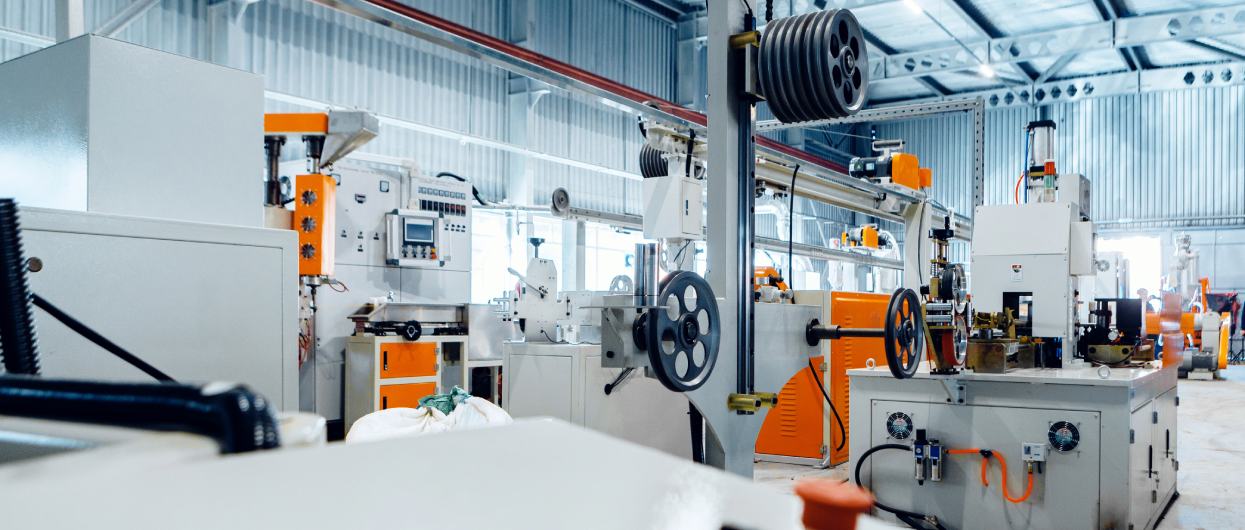
Giving a factory tour to your clients or investors can be just what you need to build a closer relationship with them. Once your visitors see where your products are made and meet your staff, your company will no longer be another faceless corporation. Thanks to that, they’ll be more inclined to stay loyal to your brand.
But a disorganized, unprofessional company tour can hurt your reputation far more than help it. And in a noisy, chaotic environment such as your factory, things can go wrong rather quickly. One of the biggest issues you’ll face is ensuring your visitors hear the presentation they came for.
Luckily, that’s where tour guide headsets can come in handy. As their name clearly says, they’re a perfect tool to use for tours of all kinds, including factory ones. But before you rush to buy some, let’s take a look at what you should know about them.
What Exactly Is a Tour Guide System?
A tour guide system is a network of devices whose main purpose is to make communication in high-noise environments easier. Those devices typically include:
- A transmitter. It transmits your voice wirelessly to other people’s headsets or earphones, as long as they are within range.
- A receiver. This part of the system receives the transmitted voice and sends it to the headset or earphones.
- A microphone. Depending on what you need, microphones can either be handheld or hands-free. In both cases, speaking into them allows the visitors with headsets to hear you.
- A headset. or earphones. When your visitors put on headsets or earphones, they’ll be able to hear your voice loud and clear no matter where you stand or how noisy it is.
- Charging stations or cases. Since the devices we mentioned are portable and wireless, they rely on batteries to power them. Obviously, those batteries need charging, which is why charging stations are necessary. They often come in the form of a case, allowing you to store your equipment and charge it at the same time.
Aside from these units that every tour guide system must have, there are more complex kinds with additional functionalities. For instance, some communication systems offer simultaneous translation, noise reduction and canceling, and volume control. Thanks to that, they can have various applications — factory and plant tours, audio services for the visually impaired, and translation services during an international conference, just to name a few.
Also read: 50+ Trending Alternatives To Quadpay | A List of Apps Similar To Quadpay - No Credit Check/Bills and PaymentTypes of Tour Guide Systems
Typically, you’ll encounter two types of tour guide systems on the market. Those are one-way systems and two-way systems. Each has its own applications, benefits, and drawbacks, so think carefully before deciding which one is right for you.
One-way systems allow only the tour guide to speak while everyone else listens. They come with several headsets or earphones, but only one microphone — used by the person who is delivering the presentation. This type is excellent when presenting in a large group where interaction isn’t necessary.
On the other hand, two-way systems are perfect for small groups and group training sessions. Every member of the group has their own microphone, meaning that they can interact with all other members and the guide. If you want to hear your visitors’ feedback or you feel that interactive tours are better, we highly recommend getting a two-way tour guide system.
How Does a Tour Guide System Work?
After finding out what devices it includes and what it’s used for, there’s one thing you still may be wondering — how does a tour guide system work, exactly? Luckily, we’re here to resolve that mystery and give you a quick rundown.
Once you turn on your wireless equipment, all units are connected to one another using the so-called MHz frequency bands. These bands are used for radio, television, and other terrestrial broadcasting, and they allow for quick and easy transmission of voice. Thanks to them, there’s no need for wires of any kind — you just need to set up your devices so they are on the same frequency.
After that, there’s nothing to worry about. Simply speak into your microphone as you take your guests on tour. As long as they’re within range, they’ll hear you as if you were standing right next to them. The noise-reducing feature will ensure no background noise drowns out your voice, yet at the same time, you won’t be entirely deaf to your surroundings. And that’s essential in a potentially dangerous environment that a factory can be — you want to be ready to respond to any warning or commotion.
Other Applications a Tour Guide System Can Have in Your Factory
Tour guide systems are excellent for factory tours, but that’s not their only application. In fact, even within your company, there are still a few more uses you can find for them. For example:
- Use them when training your future employees and showing them around their new workplaces.
- Give them to factory workers so they can interact without shouting and straining their voices.
- Have walking meetings and conferences in the factory without having to stop any activities or production.
Once you actually buy a tour guide system, we’re sure you’ll find plenty of other uses for it. But even if you don’t, what we’ve listed here should be more than enough.
In Conclusion
If you’ve been thinking of getting a tour guide system for your factory tours and other needs, don’t hesitate. Now you have enough information to understand why you should have one and what it entails. So go ahead — we’re sure you won’t regret it.
Top 10 News
-
01
[10 BEST] AI Influencer Generator Apps Trending Right Now
Monday March 17, 2025
-
02
The 10 Best Companies Providing Electric Fencing For Busines...
Tuesday March 11, 2025
-
03
Top 10 Social Security Fairness Act Benefits In 2025
Wednesday March 5, 2025
-
04
Top 10 AI Infrastructure Companies In The World
Tuesday February 11, 2025
-
05
What Are Top 10 Blood Thinners To Minimize Heart Disease?
Wednesday January 22, 2025
-
06
10 Top-Rated AI Hugging Video Generator (Turn Images Into Ki...
Monday December 23, 2024
-
07
10 Top-Rated Face Swap AI Tools (Swap Photo & Video Ins...
Friday December 20, 2024
-
08
10 Exciting iPhone 16 Features You Can Try Right Now
Tuesday November 19, 2024
-
09
10 Best Anatomy Apps For Physiologist Beginners
Tuesday November 12, 2024
-
10
Top 10 Websites And Apps Like Thumbtack
Tuesday November 5, 2024







